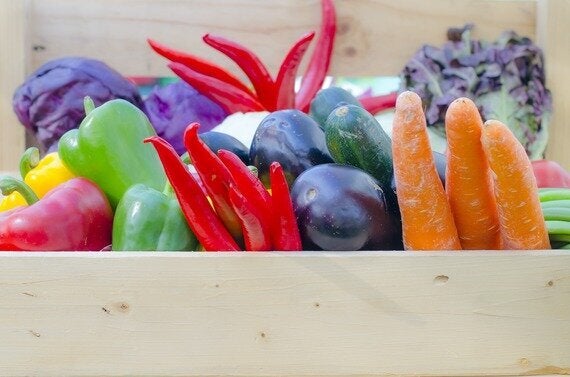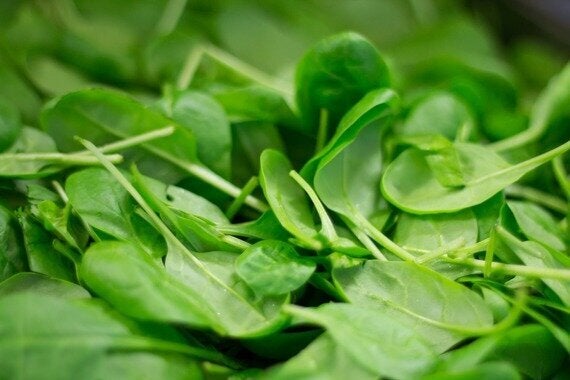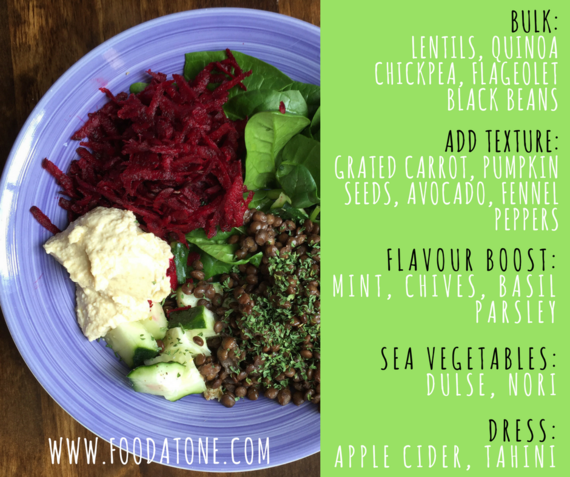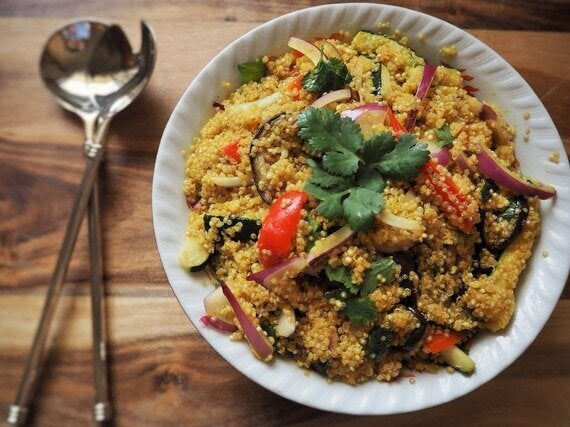Let's get to the point: if you are eating three times a day and one of your meals consists of just leaves and the other just a grain, you are not giving your body what it needs. Your body will start communicating with you by displaying symptoms such as skin breakouts, tiredness, feeling faint or just plain hungry!

Photo Credit: Food At One
The '5-a-day' rule has recently risen to '10-a-day' with a keener focus on eating vegetables instead of fruit. The argument being, even if you consume fruit in its whole form (far more fibre found in a whole fruit than a fruit juice), it is still very high in sugar and therefore, large quantities are not advised. Furthermore, there is a misconception that, adding lots of dried fruit into your diet is beneficial, this is not the case: dried fruit has even more sugar than fruit in its natural, fresh form. That's a blog for another day, today we focus on salads and how we can pack as many of our 11-a-day into one bowl or plate of goodness.
Let's look a little closer...
Why The Lettuce Does Not Count Towards Your Vegetable Count
Lettuce is made mostly of water and has a very low nutritional content. Any vegetables that are high in water such as celery, cucumber or radishes, have a lower nutritional content than other, harder vegetables such as carrots and sweet potatoes. If you are considering a salad for lunch, think more about the nutritional content; if you remove the water-laden ingredients, what is left as the main source of nutrition?

Photo Credit: Pixabay
Why Raw Spinach Can Be Making You Deficient
Raw spinach contains oxalic acid, a chemical that blocks the absorption of iron and calcium.
This might sound confusing, especially when we are often told how good spinach is for us - Pop-Eye lived on the stuff and was super strong, right? To be clear: spinach is packed full of nutrients but, we will benefit from these only when lightly steamed or cooked (and be sure to bin the water as it contains that blocker, oxalic acid!). Therefore, if you are eating raw spinach regularly in your salads or juicing with it daily, then you need to swap it out for rocket or watercress or eat it cooked.

Photo Credit: Pixabay
How To Make A Healthy Salad
When trying to ensure a healthy salad mix, add in legumes like black-eyed beans, pinto beans, black beans, chickpeas or lentils and cooked green vegetables like green beans or broccoli, as well as other vegetables such as grated carrot or chunky beetroot. Often have leftover roasted vegetables from a previous meal? Add them into your salads.
Sun-dried tomatoes, olives and artichokes can all be kept in your cupboard for as-and-when you need them. Add a tablespoon or two of activated nuts, such as almonds or cashews and seeds like sunflower, sesame or pumpkin.
Go further with your dressings: rather than a simple olive oil drizzle, add some chopped up basil and whip into a pesto dressing, or add tahini for a selenium and calcium boost. If your salad makes you stop and chew every mouthful well, then this is a well-composed, delicious & nutritious salad! Bravo!

Photo Credit: Food At One
Vegetable Sources Of Protein
By adding a source of protein into your salads, you will find yourself fuller for longer and you'll be boosting your body with essential amino acids. Cottage cheese or feta are great non-meat examples. If you're dairy free or meat free, you'll know that there are other, plant-based sources of protein such as the legumes and green vegetables, mentioned above. Quinoa and chickpeas also provide nine essential amino acids and are considered a complete source of protein.

Photo Credit: Pixabay
The aim of the game when eating salads is, focus on variety: be sure to include a mixed plate of: protein, cooked vegetables, fresh herbs, nuts and seeds, grains and store cupboard gems. When eating a salad, a great idea is to aim for a plate full of colour - greens, purples, oranges, whites and so on! Follow my tips above and be sure to pack in as much as you can!
Food At One Recipes
Super Quick Pesto - Perfect For A Nutrient-Packed Dressing!